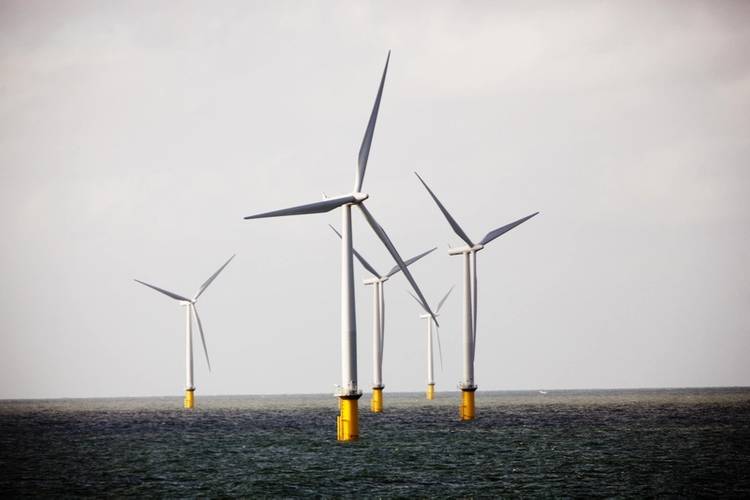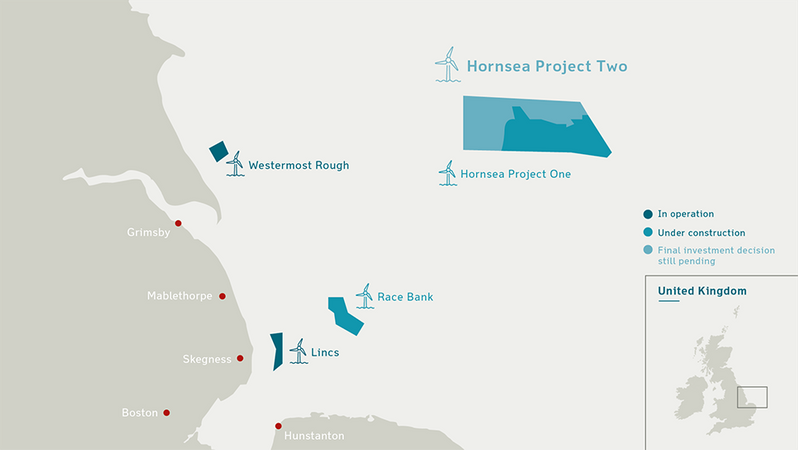Britain on Tuesday approved plans to expand an offshore wind farm project that could ultimately have more than 600 turbines spread across an area of the North Sea more than twice the size of London.
The Hornsea Two windfarm project, to be built by DONG Energy , is part of Britain's push to invest in new electricity generation capacity needed to overcome a squeeze on power supplies in the next decade.
All but one of Britain's existing nuclear plants, which produce around a fifth of the country's electricity, are set to close by 2030 as they come to the end of their operational lifespans. And the government plans to close coal-fired plants by 2025 as a part of its efforts to meet climate targets.
Plans for a new 18 billion pound nuclear power plant, Hinkley C, are currently under review amid spiralling costs and concerns over Chinese investment in the project.
If built, Hornsea Two, some 89 kilometres off the coast of Yorkshire, will have 300 turbines and is expected to generate around 1.8 gigawatts (GW) of electricity, enough to power up to 1.6 million homes, DONG Energy said in a statement.
The Danish company has already secured planning permission for the adjacent 1.2 GW Hornsea One development. Earlier this year, DONG Energy made a final decision to go ahead with this project, which it said could begin generating electricity in 2020 and would be the world's largest offshore wind farm.
"We have already invested 6 billion pounds ($7.79 billion) in the UK, and Hornsea Project Two provides us with another exciting development opportunity in offshore wind," Brent Cheshire, DONG Energy's UK Chairman said.
The two sites together, at 3 GW, would also have a similar capacity to the Hinkley C nuclear project, which, if it goes ahead would be built by French company EDF with financial backing from a Chinese state-owned company.
The government said its next round of renewable funding will focus on offshore wind and has said around 10 GW of capacity could be installed by the end of the decade.
"The UK's offshore wind industry has grown at an extraordinary rate over the last few years, and is a fundamental part of our plans to build a clean, affordable, secure energy system," Business and Energy Secretary Greg Clark said.
Wind power (onshore and offshore) made up around 11 percent of Britain's electricity production in 2015, up from 9.5 percent the year before.
DONG, which floated on the on the Copenhagen stock exchange earlier this year valued at $15 billion, also has plans for Hornsea Three. If all three Hornsea windfarms were to be built they could produce as much as 4 GW of electricity, DONG said in a promotional video on its website.
(By Susanna Twidale)






